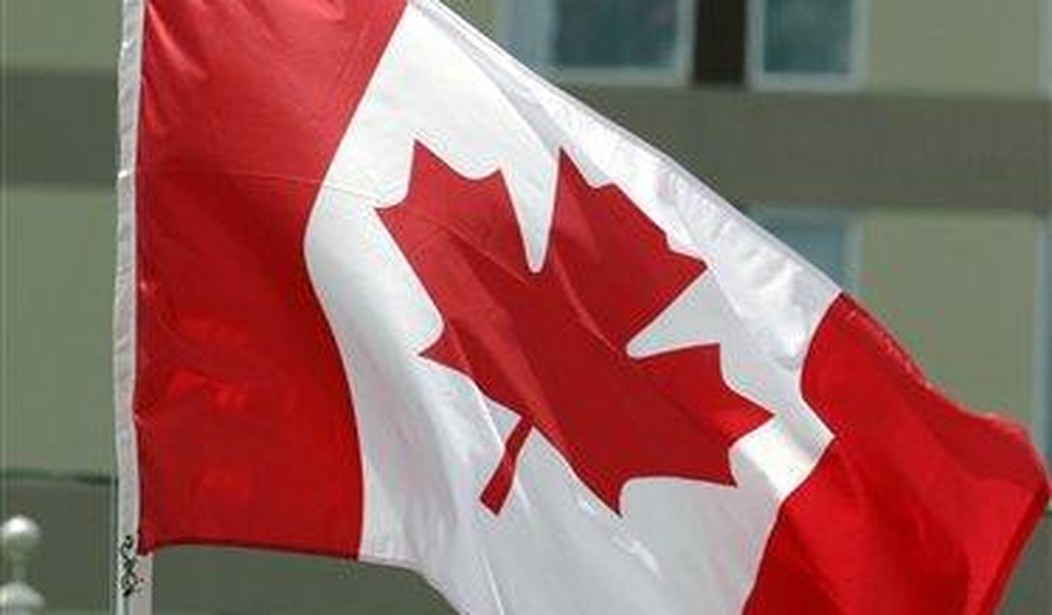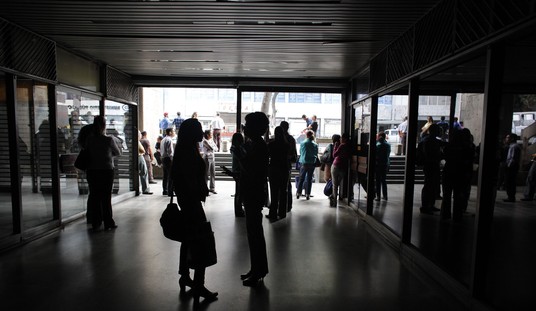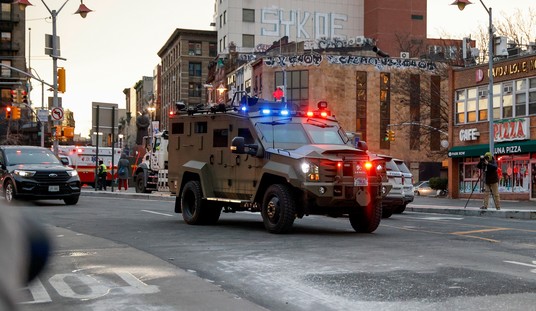Americans have always thought of Canadians as our nice neighbors to the North—their policemen wear funny hats, and they have polar bears and ice hockey and beer and syrup and mostly seem like a pretty friendly lot. They love to say “eh” and “hoser” and try to dodge moose in heat.
Our view of them quickly changed with the emergence of COVID and the rise of Justin “Blackface”‘ Trudeau, who in short order turned the land of Labatt into a totalitarian dystopia. Remember the endless draconian COVID restrictions that were even worse than those in the United States? Remember the trucker protest, where Trudeau took a page out of Iran Supreme Leader Ali Khamenei’s playbook and just summarily shut them down without listening to any of their concerns?
Now a new disturbing fixation seems to be taking hold in the Great White North—assisted, government-sanctioned suicide. A chilling report from columnist Rupa Subramanya on Bari Weiss’ Substack details how a law passed in 2015, ostensibly to assist those with untreatable, deadly conditions, has morphed into a way for anyone at all to end their lives. Subramanya writes that in the first years of the Medical Assitance in Dying (MAiD) law, many people at the end of their journey were able to go into the night on their own terms. But now:
Today, thousands of people who could live for many years are applying—successfully—to kill themselves.
Think about that for a second. Perfectly healthy people are now allowed to get help killing themselves for whatever reason, be it mental struggles, loss of will to live, whatever the case may be. One’s heart goes out to those at such wit’s end that they want to end it all, but can we really with a good conscience sanction the people who help them kill themselves? It’s against the tenets of virtually every major religion, and the basic morality of most people on earth, not to mention against the spirit of the Hippocratic Oath doctors used to take—”first, do no harm.”
Does Canada's Medically Assisted Death (MAID) program make it possible to allow a 23-year-old with diabetes and depression to have the state end their life? Apparently so. Chilling report by Rupa Subramanya https://t.co/xwOLLlY7xo
— Ray McGinnis (@RayMcGinnis7) October 12, 2022
The statistics are sobering:
There have been a total of 31,664 MAiD deaths and the large majority of those people were 65 to 80 when they died. In 2017, only 34 MAiD deaths were in the 18- to 45-year-old category. In 2018, that figure rose to at least 49. In 2019, it was 103; in 2020,118; and in 2021, 139.
Is it just me, or do all these government acronyms always turn out to be creepy AF? The MAiD law? Like a lovely maiden is going to show up and usher you on your way to heaven? For God’s sake. But what’s causing this macabre rise?
…the government amended the original legislation, stating that one could apply for MAiD even if one’s death were not reasonably foreseeable. This second track of applicants simply had to show that they had a condition that was “intolerable to them” and could not “be relieved under conditions that they consider acceptable.”
The mainstream media is now finally covering the impact of Canada's euthanasia regime on the disabled. A reminder: this community has been warning of the consequences of this for years, and they were ignored until the bodies started to pile up. pic.twitter.com/Vqb5QMJtaJ
— Jonathon Van Maren (@JVanMaren) October 11, 2022
The Canadian Health website gives a chilling account of who is eligible:
Eligibility
Who is eligible for medical assistance in dying
New changes to the legislation have allowed a broader group of people to be eligible to request and receive MAiD. These changes came into effect on March 17, 2021.
In order to be eligible for medical assistance in dying, you must meet all of the following criteria. You must:
- be eligible for health services funded by the federal government, or a province or territory (or during the applicable minimum period of residence or waiting period for eligibility)
- generally, visitors to Canada are not eligible for medical assistance in dying
- be at least 18 years old and mentally competent. This means being capable of making health care decisions for yourself.
- have a grievous and irremediable medical condition
- make a voluntary request for MAiD that is not the result of outside pressure or influence
- give informed consent to receive MAiD
They go out of their way to say that mental conditions are not enough by themselves to receive your death-affirming care. However, Subramanya writes,
Next March, the government is scheduled to expand the pool of eligible suicide-seekers to include the mentally ill and “mature minors.” According to Canada’s Department of Justice, parents are generally “entitled to make treatment decisions on their children’s behalf. The mature minor doctrine, however, allows children deemed sufficiently mature to make their own treatment decisions.” (The federal government does not define “mature,” nor does it specify who determines whether one is mature. On top of that, the doctrine varies from one province to another.)
Not surprisingly, the issue comes down to money. Simply put, the fewer people in the government-funded healthcare system, the less cost. Have them simply die, and you save a few bucks. Note that the system is making money on your way out the door—presumably, the requirement for federally funded health services means they get paid one last time.
In October 2020, the Office of the Parliamentary Budget Officer issued a report stating that MAiD would cut healthcare costs by over $66 million. In 2017, Aaron Trachtenberg, a research fellow and a doctor at the University of Manitoba, and Braden Manns, a health economist and nephrologist at the University of Calgary, published a paper predicting that MAiD could slash healthcare costs by as much as $100 million yearly.
Yes, let’s save a few hundred million. Normally I’d support that one hundred percent, but hold on… that savings will come because we’ve simply gotten rid of a few troubled people? Nevermind.
I deeply sympathize with those who have untreatable, deadly conditions where their bodies wither, their brains atrophy, and their lives are diminished to feeding tubes and diapers. I’ve seen it, and it’s wrenching. I’ve struggled with the question: is it okay to end it all in these conditions? Many do not agree, but I think that at least seems reasonable. Why would I want to waste away into a husk of my former self, costing hundreds of thousands of dollars that my grandchildren could surely use, causing my family great pain, only to survive a few more days or months in a miserable approximation of the man I once was? I understand that, as well as the desire to avoid crippling pain.
This sad trend isn’t limited to Canada, but seems to be prevalent in places with single-payer health systems. In a particularly sad story, a young woman who survived the Brussels airport ISIS attack died by assisted suicide at the age of 23 in May, unable to continue living because of the PTSD she experienced. While I cannot possibly imagine her trauma, suicide is not the answer. She was 23 years old.
🧵
1/yesterday it was announced 23 year old French citizen Shani De Corte died via assisted suicide, She had no medical issues but suffered from PTSD following a terrorist attack
healthy adults are being given assisted suicide in the west. pic.twitter.com/DiPmmZEC0e
— CatGirl Kulak 😻😿 (@FromKulak) October 12, 2022
Other recent assisted suicides include 66-year-old drummer Anton Fier and renowned French film director Jean-Luc Godard, aged 91 and in ill health.
You might empathize with Godard, but we’ve entered a new level of depravity when we encourage those with lives yet to live to end it all. However comprised they are, to just end it because “it hurts” is not an answer. Life hurts.
There are countless stories of those who survived the unimaginable horrors of the Holocaust and who went on to live meaningful lives and exalted in the mere gift of existence. I know I haven’t lived through such depravity, but I also know that to give up on life is death. Between the “abortion up until the month of birth movement” in the United States, and the “kill yourself if you feel like it” movement in Canada, it does seem like a Death cult has taken hold.
It must be stopped.














